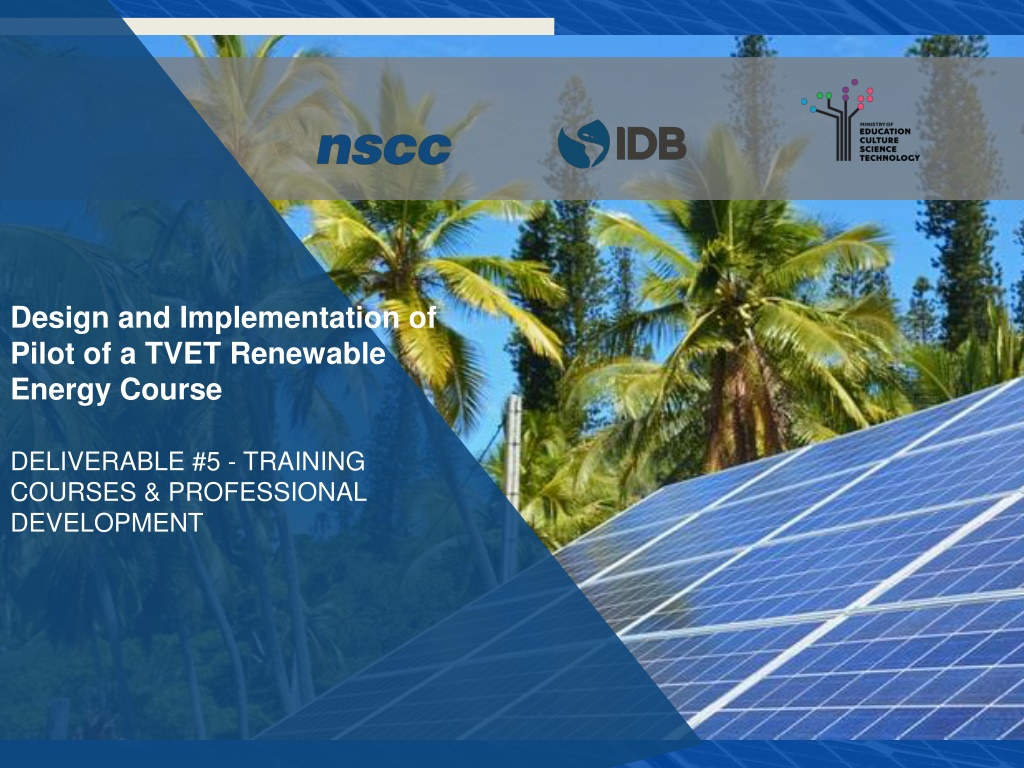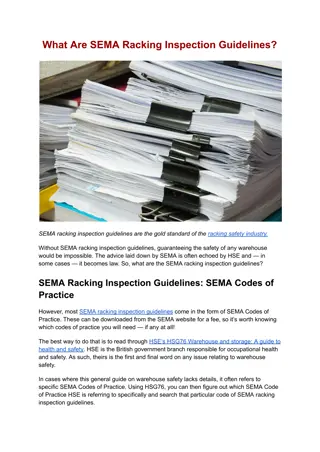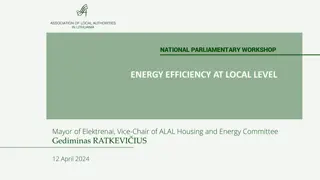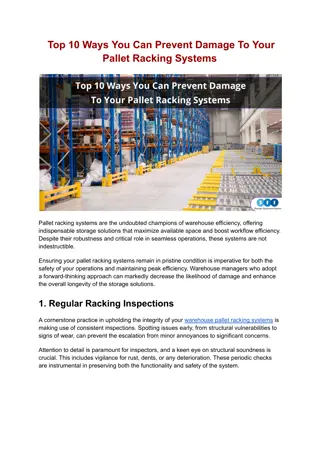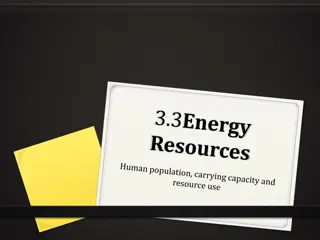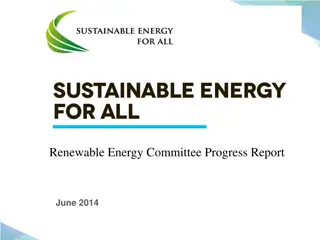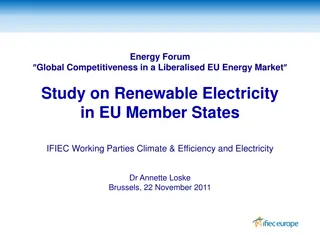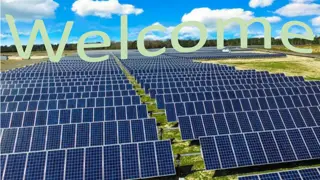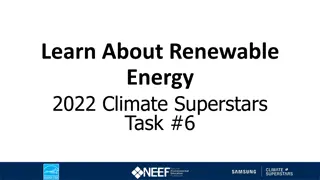Racking Combiner Boxes in Renewable Energy Systems
Explore the crucial role of racking combiner boxes in renewable energy systems. Learn about their functions, installation process, wire management, grounding, and bonding. Discover how these boxes combine PV panels, provide overcurrent protection, and ensure effective energy output.
Download Presentation

Please find below an Image/Link to download the presentation.
The content on the website is provided AS IS for your information and personal use only. It may not be sold, licensed, or shared on other websites without obtaining consent from the author.If you encounter any issues during the download, it is possible that the publisher has removed the file from their server.
You are allowed to download the files provided on this website for personal or commercial use, subject to the condition that they are used lawfully. All files are the property of their respective owners.
The content on the website is provided AS IS for your information and personal use only. It may not be sold, licensed, or shared on other websites without obtaining consent from the author.
E N D
Presentation Transcript
Design and Implementation of Pilot of a TVET Renewable Energy Course DELIVERABLE #5 - TRAINING COURSES & PROFESSIONAL DEVELOPMENT
Racking Combiner Box This module introduces the combiner box as an accessory to the racking system. Mounting the combiner box. Wire management. Grounding and bonding.
Racking Combiner Box Questions?
Racking Combiner Box What is a Combiner box? An electrical enclosure that is outdoor rated. NEMA Rated (National Electrical Manufacturers Association). NEMA 3 minimum.
Racking Combiner Box What is a Combiner box? It is a box that combines strings of PV panels. A string is a connection of PV panels in series. A single panel is still a string. The strings are combined (paralleled) into a single string.
Racking Combiner Box The combiner box takes the output from PV panels and brings them together for a single output pair of wires. The combiner box will indicate how many strings it can accommodate. Also voltage and amperage limits. Provides overcurrent protection.
Racking Combiner Box The wire coming from the PV string is sized to handle the short circuit current (Isc). The wire is also rated for the maximum voltage of the string.
Racking Combiner Box A combiner box is normally only required if there are more than two strings of PV panels. With one string only the combiner can act as a disconnection means if required. An over current device is not required unless it is used as the disconnection means on a single string input.
Racking Combiner Box With a two string array if one string faults, the current generated is not great enough to damage either string s wire. Therefore a combiner box is not required. The two strings can be combined in a junction box or brought to the charge controller or inverter. A disconnecting means will be required.
Racking Combiner Box When three or more strings are used, a fault on one string will cause the other two strings to feed the fault. This will have a current more than the faulted string s wire can support . The combiner box will have either breakers or fuses that will protect the faulted string.
Racking Combiner Box The combiner box with hinged cover with screw lockable. Picture courtesy author
Racking Combiner Box The MidNite Solar combiners come with a suggested schematic. Picture courtesy author
Racking Combiner Box This combiner box has room for three strings. The openings are used to access the finger pull fuses or DC rated breakers. Picture courtesy author
Racking Combiner Box MidNite Solar manufacturers and sells combiner boxes and accessories. Accessories include: Fuses or Breakers Surge protector Strain relief connectors Picture courtesy MidNite Solar
Racking Combiner Box MidNite Solar has documentation on their combiner boxes. The link below is Combiners explained with diagrams . https://www.midnitesolar.com/pdfs/MidNite%20P V%20Combiners%20explained%20w%20diagra ms.pdf
Racking Combiner Box MidNite Solar has documentation on their combiner boxes. The link below has the previous link plus others about combiner boxes. https://www.midnitesolar.com/productPhoto.php ?product_ID=78&productCatName=Combiners& productCat_ID=9&sortOrder=4&act=p
Racking Combiner Box MidNite Solar can be found on the internet at: https://www.midnitesolar.com/ MidNite Solar has many products and great documentation on their products.
Racking Combiner Box Schematic diagram of the MNPV3. 3 breakers. 3 strings of 3 PV panels. Picture courtesy MidNite Solar
Racking Combiner Box Inside combiner box. Notice the two busbars. Isolated from housing busbar for the negative of PV s Grounding busbar connected to metal housing. Picture courtesy MidNite Solar
Racking Combiner Box The busbar that is connected to the metal housing is the where the bonding ground wire is connected to. The bonding wire is connected to each rail and comes to this busbar. All of the racking and PV panel bonding is at same potential.
Racking Combiner Box The busbar that is isolated from the metal housing is the where the negative of the PV panels connect to. Insulating material is placed under the busbar. Picture courtesy MidNite Solar
Racking Combiner Box Positive leads from PV strings are combined into this connector. Positive leads from PV strings go to the breaker / fuse holders. Breaker + is input. Picture courtesy MidNite Solar
Racking Combiner Box Negative leads from PV strings are combined into this busbar. Picture courtesy MidNite Solar
Racking Combiner Box Positive leads in this setup come in at the top of the breakers. Picture courtesy MidNite Solar
Racking Combiner Box The installation of a PV combiner can have Code rules that apply. The location to install the combiner may be required to be in site of and / or a maximum distance from the PV panels. Some systems have the PV modules located close to the inverters and or battery system.
Racking Combiner Box If this is the case, you can elect to mount the combiner box inside and run each PV string down to the combiner box inside the house. This is convenient for trouble shooting and upgrading. For longer runs the combiner will be mounted outdoors on the pole for pole mounted PV arrays or similar mounting for rack mounted arrays.
Racking Combiner Box The combiner box can be attached to a wooden surface. L brackets attach to the rails. Picture courtesy author
Racking Combiner Box The combiner box can be attached to a wooden surface. L brackets attach to the rails. Picture courtesy author
Racking Combiner Box The combiner can be mounted in the vertical position or slanted backwards to accommodate up to a 3/12 (14 ) roof pitch. All unused holes should be blocked using RTV sealant or some similar goop in order to keep rain and insects out of the enclosure. Care must be taken to insure that no water will get on terminal busbars when mounted less than vertical.
Racking Combiner Box The mounting of the combiner box on a roof. Minimum slope to keep rain from entering side knockouts. Picture courtesy MidNite Solar
Racking Combiner Box The wire coming in to the combiner box are put into a strain relief connector. This strain relief connector has two holes. One for the positive wire. One for the negative wire. Picture courtesy author
Racking Combiner Box Typical wires at the combiner box are: The output wires from the PV panels. The grounding / bonding wires. The positive combined wire. The negative combined wire.
Racking Combiner Box Wire management is the running of the PV panel wires along the rail. Clips made for the racking. Cable ties designed to provide UV protection. These are the preferred methods of supporting the PV wire.
Racking Combiner Box Wire management is also the running of the output wires from the combiner box. Typical cable management is used as per normal electrical practices.
Racking Combiner Box In the combiner box the wire that electrically bonds the rails will enter and attach to the EQUIPMENT GROUNDING TERMINAL. Another grounding wire will leave and connect to the system ground. Picture courtesy MidNite Solar
Racking Combiner Box Questions?
